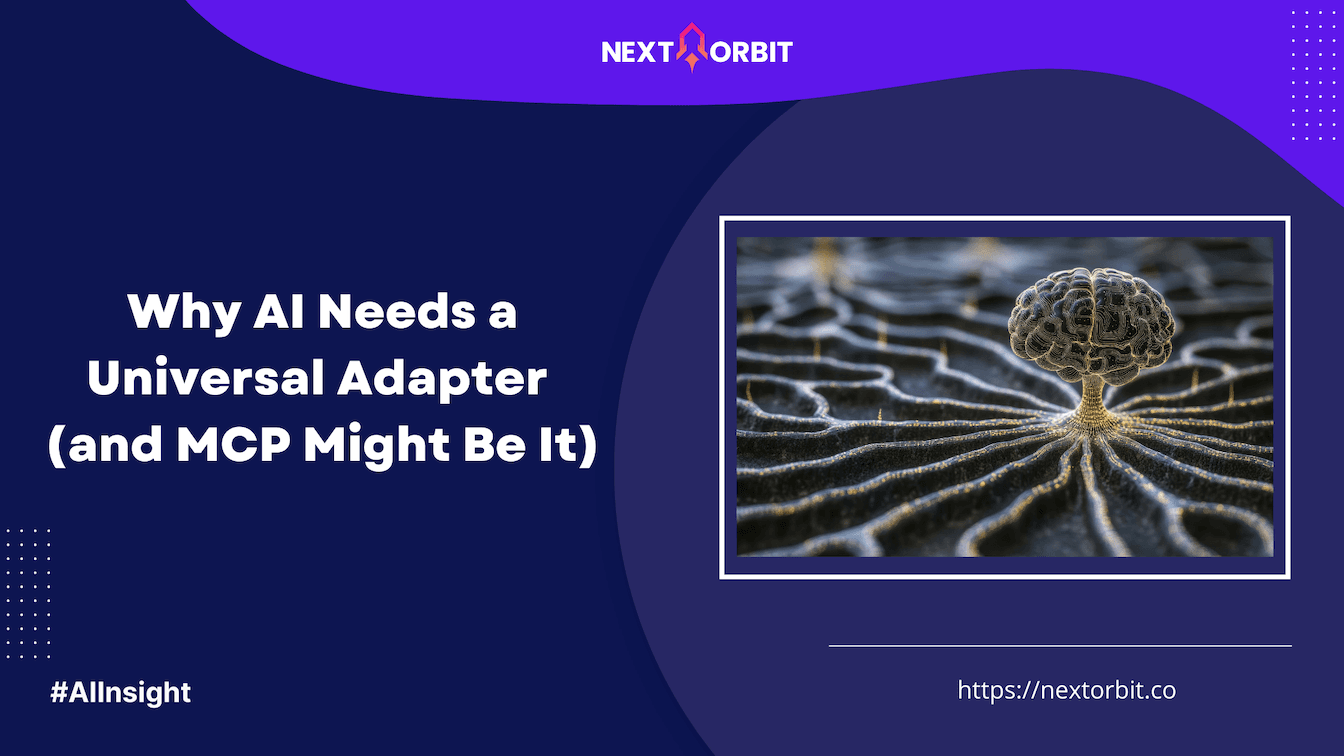The tech world loves its acronyms. Every few months, a new one pops up and suddenly everyone is talking about it in boardrooms, LinkedIn posts, and tech blogs. One of the latest buzzwords (well, it’s not so new anymore, but anyhow) making waves is MCP.
But what exactly is MCP? Why should you care? And are there alternatives if it doesn’t fit your needs? Let’s break it down in simple, no-jargon terms.
What is MCP?
MCP stands for Model Context Protocol. You can think of it as the USB port of the AI world.
Before USB became a common standard, connecting devices to your computer was challenging – every printer, scanner, or camera required a different cable. USB changed everything by becoming a universal standard. Plug in, and it just works.
MCP does the same thing for AI. It acts as a universal connector between AI models and the apps, tools, or data sources you use every day.
Without MCP, an AI system is like a brilliant mind locked in its own room – smart, but disconnected from your world. With MCP, that mind can plug into your world, pull the right context, and give you results tailored to your actual needs.
Why Does MCP Matter to You?
At first glance, MCP might sound like something only engineers or developers need to care about. But the truth is, it can directly impact how you work, learn, and create.
- Smarter AI assistants
Without MCP, your AI is like a helpful intern who doesn’t know where the files are. With MCP, it’s like giving that intern access to your company’s drive, CRM, or task manager. Suddenly, their suggestions are useful, not generic. - Personalized experiences
For example, a marketer asking for campaign advice today gets a one-size-fits-all answer. With MCP, the AI could “plug in” to your analytics dashboard and content calendar, tailoring its strategy to your numbers. - Less app-hopping
Today, you switch between dozens of apps. MCP lets AI fetch, analyze, and integrate information across them in one flow. Imagine asking one question and getting an answer that already considers your reports, emails, and documents. - Future-proofing
As more apps adopt MCP, the ecosystem grows. Just like USB became the default for devices, MCP could become the standard way AI connects with everything around you.
In short, MCP is what transforms AI from a chatbot into a true digital teammate.
Are There Alternatives to MCP?
Yes – MCP isn’t the only way to connect AI models with the outside world. Here are some common alternatives:
- Direct Integrations (APIs)
Many apps already offer APIs (Application Programming Interfaces) that let AI connect directly. The downside? Every integration has to be custom-built – like having a different cable for each device before USB came along. - Plugins
Some AI platforms allow third-party plugins. They extend functionality but often only work in silos. It’s like having an adapter that works for one gadget but not the next. - RAG (Retrieval-Augmented Generation)
This approach feeds AI with relevant documents or data during a query. Useful, yes – but it’s more like giving someone a stack of papers to skim, not giving them live access to your apps. - Custom Middleware
Enterprises sometimes build their own “middle layers” to connect AI with internal systems. Effective, but costly and hard to maintain – like building your own custom ports instead of using USB.
Compared to these, MCP offers a standardized, universal approach – a plug-and-play system that saves time, effort, and complexity.
In plain English, MCP is like giving AI a USB port and a passport. It can plug into the tools you already use, understand your context, and deliver results that actually matter.
For individuals, this means AI that feels less like a chatbot and more like a colleague who knows your files, apps, and workflows. For businesses, it means smarter decisions, faster workflows, and fewer silos.
Of course, APIs, plugins, and custom integrations will always exist. But MCP’s promise lies in simplicity, scalability, and universality – the same reasons USB became the global standard for connecting devices.

